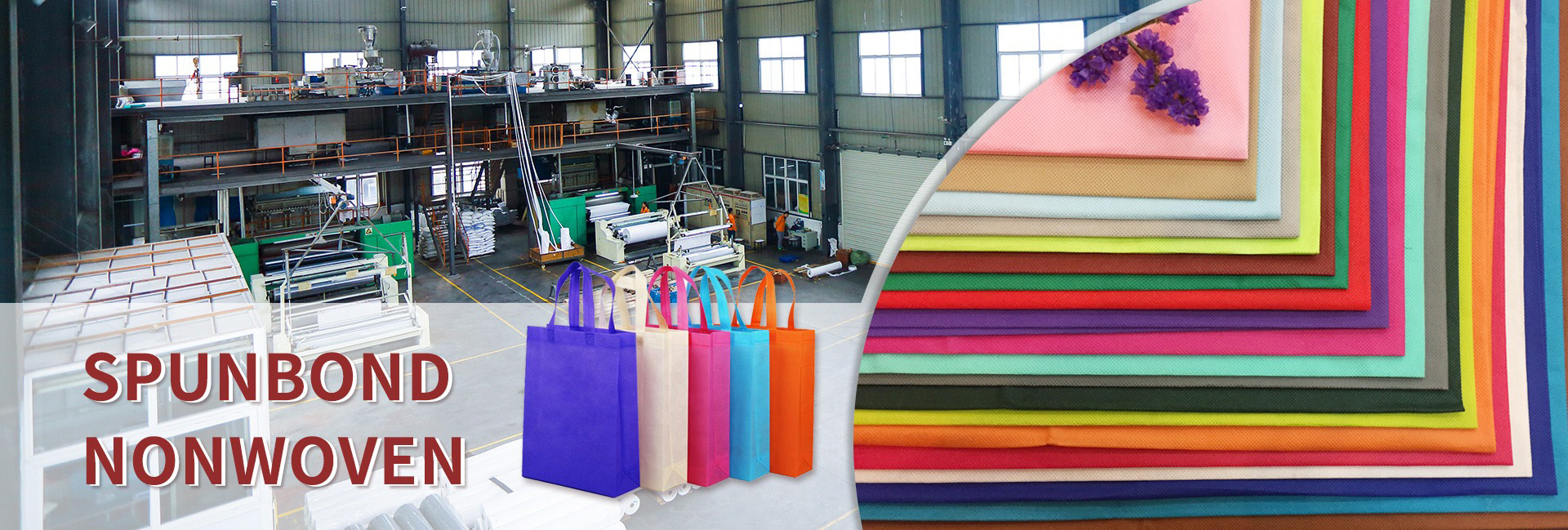With the increasing awareness of environmental protection among people, non-woven eco-friendly bags are becoming more and more popular. Non woven eco-friendly bags not only replace disposable plastic bags, but also have the characteristics of reusability, environmental friendliness, and aesthetics, which have become an indispensable part of modern people’s lives. Currently, the production technology of non-woven environmentally friendly bags in China has become increasingly mature, and there are also more and more production lines. The main raw material for non-woven environmentally friendly bags is polypropylene, which is mostly recyclable. Therefore, the production process of non-woven environmentally friendly bags is more environmentally friendly.
Compared with traditional plastic bags, non-woven environmentally friendly bags are less prone to paint peeling and deformation, have a longer service life, and can greatly reduce people’s use of plastic bags, reducing the pollution caused by plastic waste to the environment. Therefore, with the support of environmental protection policies, the market demand for the production of non-woven environmentally friendly bags continues to grow, and the market prospects are broad.
The production of non woven bags environmentally friendly is made of spunbond non-woven materials, which have the characteristics of environmental protection and reusability, and are widely used in shopping, packaging, advertising and promotion fields. During use, attention should be paid to some maintenance methods for non-woven bags eco-friendly to ensure their lifespan and quality. Next, let’s talk about the use and maintenance methods of non-woven environmentally friendly bags.
Usage
Shopping bags: In shopping, non-woven eco-friendly bags have gradually replaced plastic bags as consumers’ eco-friendly shopping bags due to their lightweight, reusable, non polluting, and easy to clean characteristics.
Advertising bags: The surface of non-woven environmentally friendly bags can be printed with various corporate advertisements, making it easy to promote the brand image of the enterprise and becoming an important way for the enterprise to showcase its image.
Gift Bag: The production of non-woven eco-friendly bags has a low-key feature and is suitable for gift packaging.
Travel bag: Non woven eco-friendly bag is lightweight and easy to carry, can be used as a travel bag, providing convenience for tourists.
Maintenance method
Temperature control: The non-woven environmentally friendly bag material itself has a certain ability to withstand high temperatures, but it is not suitable for long-term storage at high temperatures.
Moisture and sun protection: Non woven eco-friendly bags should be kept away from direct sunlight and should not be stored in damp environments for extended periods of time to prevent yellowing.
Cleaning and dust removal: Non woven eco-friendly bags can be cleaned directly with water or with a washing machine, but detergent should not be used to avoid affecting the lifespan of the material.
Avoid friction: Non woven eco-friendly bags should avoid friction and scratches with sharp objects to prevent material surface wear, affecting appearance and service life.
Dry storage: Non woven eco-friendly bags should be stored in a cool environment to avoid high temperature, humidity, and pollution. Store flat to prevent deformation of the bag.
In summary, non-woven eco-friendly bags are environmentally friendly and reusable bags widely used in multiple fields. However, during use, we also need to pay attention to maintenance methods to ensure their lifespan, quality, and environmental attributes, in order to achieve maximum economic and environmental benefits.
What precautions should be taken when producing non-woven environmentally friendly bags?
1. Choose good nonwoven fabric spunbond materials. The quality of non-woven fabric materials is directly related to the quality and service life of the product. Therefore, when selecting non-woven materials, attention should be paid to their thickness, density, strength and other parameters, and environmentally friendly and biodegradable materials should be selected as much as possible.
2. Reasonable bag making process. The bag making process includes the cutting, stitching, printing, packaging, and other processes of non-woven materials. When making bags, attention should be paid to the size of the bag, the firmness of the stitching, and the clarity of the printing to ensure that the quality of the bag meets the requirements.
3. Design reasonable styles and logos. The style and logo of non-woven eco-friendly bags are not only directly related to the beauty of the product and the promotional effect of the brand image, but also can bring users a better user experience. Therefore, when designing, attention should be paid to the practicality of the style and the aesthetics and easy recognition of the logo.
4. Strict quality inspection. The produced non-woven environmentally friendly bags need to undergo quality testing, including appearance defects, strength, wear resistance, printing clarity, and other aspects. Only through strict testing can we ensure product quality and meet the growing demand for high-quality products from consumers.
5. Pay attention to environmental protection issues. As a product that advocates environmental protection, the production of non-woven eco-friendly bags also needs to pay attention to environmental issues. Efforts should be made to achieve environmental protection in waste disposal and the use of materials.
Post time: Jan-24-2024

